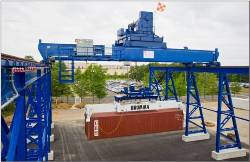
The Three Overlooked Grounds for TPP
The tide is slowly creeping in for the Trans-Pacific Partnership (TPP) as potential signatories meet on February 22nd in attempts to hammer out a final agreement. With that in mind, we can only expect the protests against TPP to ramp up as “judgment day” looms. Some see TPP as a menace—the archetype of globalization that will push down US wages, shift jobs abroad, and do it with no regard to its deleterious effects on Mother Nature.
But when we try to pinpoint TPP’s effect on US trade and social welfare, we must resist comparing it to the “ideals” that some dream up—a universal free trade agreement, infinite US job growth, or perhaps a fully enforceable “green-trade” system. Instead, TPP must be evaluated by looking at what the current and future TPP-less world looks like for the US.
Viewed in this way, there are actually three cracks in the armor of TPP critics:
(1) A Stone to Step on: It’s a fairly common argument to say free trade agreements (FTAs) act as stepping stones for reaching more inclusive trade agreements that are otherwise stalled in the abyss of the Doha round. TPP seems to reflect this mindset well. After all, TPP started out as only a small four-member 2005 pact between Singapore, New Zealand, Chile, and Brunei. TPP’s evolution has involved countries continuously jumping onto the coattails of the negotiations—first the US, followed by NAFTA countries and others, and then finally Japan. From the US standpoint, it already holds active trade agreements with six out of the eleven actively negotiating members. With South Korea now becoming interested, this number would increase to 7. TPP then is merely one more stepping stone towards wider multilateralism.
(2) A Neater “Spaghetti Bowl”: While FTAs can be good in themselves, a large crisscrossing network of them (labeled as the “Spaghetti Bowl”) can create massive confusion, with companies scrambling to determine which tariffs and rules of origin apply to what goods. But because such a large number of TPP countries are already in active trade agreements with each other, TPP will likely add coherence to the international trade scene by harmonizing existing red tape and tariff rates. And less confusion, of course, means a more certain business environment. In contrast to previous FTAs then, TPP will neaten the trade waves rather than tangle more knots.
(3) Life is No Better on the Sidelines: The scenario that must always be realized is if the US falls by the wayside in TPP negotiations. To illustrate, one needs to only look at how Canada’s reluctance to pull the trigger on trade negotiations with South Korea hurt them greatly once Korea finally signed KORUS with the US. Michael McCain, CEO of Maple Leaf Foods, writes:
“Since the U.S. signed its trade agreement with South Korea, Canada’s agriculture and food exports to that country have plummeted from more than $1-billion to just over $300-million, a loss of more than 70 per cent over the past two years alone. Canada’s total exports have fallen by just about $1-billion. Canada has lingered in the background while major global competitors including the European Union, Chile and Australia, along with the U.S., reap the benefits of trade deals with South Korea.”
Even if you’re one to say the US gains minimally from TPP (which is a shaky assumption), there’s no question it stands to lose greatly if other TPP members gain better access to important foreign markets such as Japan. The US should be aware of the consequences if the TPP goes on without it.
Are the arguments of TPP critics unfounded? Certainly not. Considerations over the US economy and working class are debates that must always be touched on. But most of TPP is simply synthesizing preexisting FTAs and the benefits of the agreement could build rather than break the international trade structure. The US shouldn’t let the pipe dreams of an “ideal” trade regime affect the progress of US trade policy.






[…] week, I posted a short article on three pro-TPP arguments that often get buried under the anti-TPP hype. In this, I talked of the need to neaten the […]